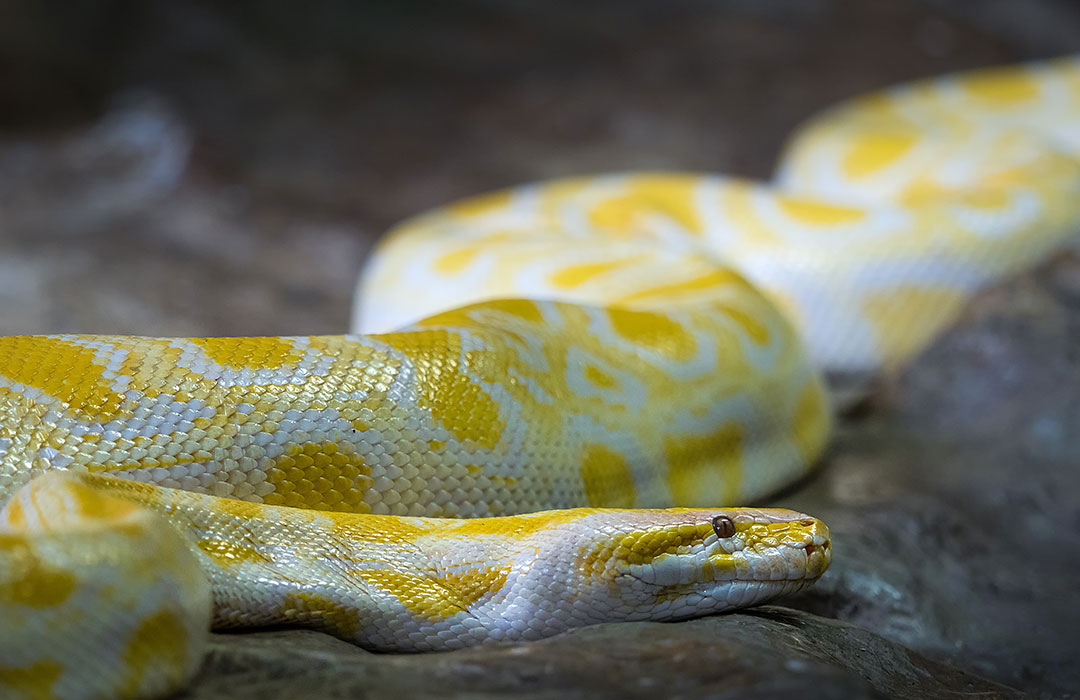
- Many of us are fearful of snakes and spiders, whether they are or aren’t poisonous or dangerous—why?
- Researchers say that this fear is deep-rooted, one we likely developed from ancestors that lived 40-60 million years ago.
- To reach these findings, researchers showed infants varying pictures of which included snakes, spiders, fish, and flowers.
- They found that the babies’ pupils were largest when viewing pictures of snakes and spiders, which led to their conclusion that they were indeed fearful of these creatures.
- This ultimately suggests that our fear of snakes and spiders is innate, which makes overcoming this fear significantly difficult.
Every few days, someone posts a picture of a mysterious snake or spider in one of my Facebook groups. “Who knows what kind of snake (or spider) this is?” “Is it poisonous?” they ask. Those who fear and despise these creatures then flood the threat with comments: “Gross!” “Get out of there!” “Burn the house down!”
The fearful proclaim the house a danger zone, while the enthusiasts try to calm everyone down, describing the snakes and spiders as “gentle” and “harmless.” But the thing is, nobody really cares if the snake or spider is actually dangerous—they’ve already decided it’s something to fear and dispose of as soon as possible.
What Gives? What Does Science Say?
It’s true that the snakes and spiders we find hanging around our yards are typically harmless. So, why is it that we fear these squirmy and eight-legged creatures? Unfortunately for these animal lovers that wish to educate the public and dismiss their fears, a recent study “Itsy Bitsy Spider…: Infants React with Increased Arousal to Spiders and Snakes” suggests that our snake and spider phobias are innate.
For ages, scientists have wondered where these widespread fears come from: are they learned or are they inborn? Previous studies were conducted to explore these two possibilities, but because adults and older children were the primary subjects, researchers were unable to determine which behaviors were learnt and which were instinctive. In addition, the only studies conducted with children solely focused on whether they noticed spiders and snakes before other animals—not specifically whether they had an inborn or learned fear of the two creatures. So, scientists at the Max Planck Institute for Human Cognitive and Brain Sciences (MPI CBS) in Leipzig and the Uppsala University, Sweden decided to cover some new ground.
How Did Researchers Reach These Findings?
The researchers conducted two studies with 6-month-old infants, which involved showing the babies pictures of snakes, spiders, flowers, and fish. To understand which creatures were more or less fearful to the infants, the scientists measured changes in pupillary dilation as they swapped out the pictures. This design allowed them to make a notable observation: even infants—who have had little to no opportunity to come in contact with these creatures—display a stress reaction when they see a snake or spider.
According to the scientists, the babies had significantly larger pupils when they saw a picture of a snake or spider versus a picture of a flower or a fish (of the same size and color). They noted that even the youngest of the group appeared to be stressed by the pictures of snakes and spiders.
Conclusively: Blame Your Ancestors
In conclusion, the researchers attribute this fear of snakes and spiders to evolutionary origin—humans have an inherited stress reaction to these animals, which teaches us to view them as scary or dangerous. And because other studies show that babies aren’t innately fearful of other theoretically dangerous animals like bears, the team believes that our ancestors—from over 40 million years ago—lived with and feared these creatures longer or more deeply than others.
My snake and spider-friendly neighbors simply wish to educate my community about the animals around us. Generally speaking, they aren’t threatening and they aren’t dangerous. However, the chance of this fact easing our minds is slim. And this study explains why: as it turns out, we’re likely born with this fear already engrained in our minds. Therefore, it’ll take more than a couple Facebook comments to change our minds about these creatures.
Source:
Hoehl, S., Hellmer, K., Johansson, M. & Gredeback, G. (2017, October). Itsy Bitsy Spider…: Infants React with Increased Arousal to Spiders and Snakes. Frontiers. Retrieved January 28, 2019 from https://www.frontiersin.org/articles/10.3389/fpsyg.2017.01710/full
Let’s keep in touch! Sign up to receive our newsletter:
Start a Relationship with An Exceptional Counselor
- Skilled and caring professional counselors
- Accepting all major and most insurances
- High-touch customer service & premium benefits
- Same- or next-day appointments
- Ultra-flexible 23.5hr cancellations














i i do not like snakes and spiders